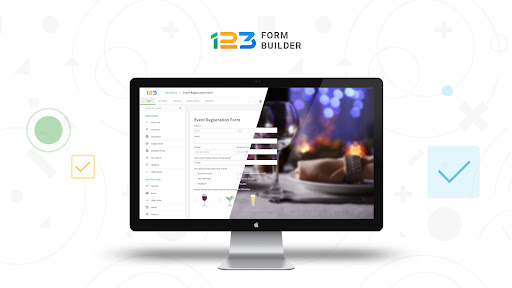Sam Makad
Sam Makad is a business consultant. He helps small & medium enterprises to grow their businesses and overall ROI. You can follow Sam on Twitter, Facebook, and Linkedin.
A customer satisfaction survey is a good way to understand that level of satisfaction. In this blog, you will learn top actionable tricks for creating great customer satisfaction surveys
Customer satisfaction surveys can be an excellent tool for three things. First, they tell you what makes your customer happy, as well as what doesn’t. Second, they give you accurate, actionable data that you can use to make smart decisions. Finally, they include the customers in your process, show that you value them, and empower them to engage with your brand.
Go back to the first sentence. The key to it is ‘can be an excellent tool’. This means that not every survey will have all, if any of these effects on your brand. When you’re surveying people to see if you’ve been doing a good job, that your support service is excellent, that your products are of value to them – you need to ask the right questions.
Starting with what kind of survey to create to which questions to ask, and even to where to distribute this, everything can affect your success in the matter. That’s what this guide is all about – to help you plan, execute, and design the perfect survey to boost your success.
The importance of collecting information about your customers’ needs and satisfaction levels has been discussed a lot in the last few decades. Many companies are fully aware of how essential it is to make customers happy – and happier all the time.
Here comes the main question – are your customers happy with your service?
If you’ve been getting increased interest over the years from them, if people come back to purchase more of your products and services, and if you have a good rating online – then yes, you have happy customers.
Are you sure that they are happy with every aspect of your product? Wouldn’t you want to know if there’s something that makes them think: “Well, this is good enough for now, but I’ll keep looking for something better”?
Also, wouldn’t you want to know why some people don’t come back to your company when they need the same service again?
According to Salesforce Research, 89% of all consumers are more likely to buy again from a brand after a positive customer service experience. This poses the question – shouldn’t you know how well your support service is performing?
There’s a lot that you can learn with good customer satisfaction service. The information will tell you what your customer wants and needs, what you’re doing right and wrong, and how to fix things.

Unless you learn this, you might start disappointing people and break down your current success. Word about brands spreads faster now than ever. The average consumer tells at least 16 other people when they have a bad experience with a brand. To make matters worse, Forbes also reports that you need around 12 positive experiences to make up for a single bad one.
Let’s say that you decided to create a customer satisfaction survey. Since you’ll be investing time – and probably some money into this, you should make it as good as it gets.
No matter what your business does and what kind of data you wish to achieve, the following 3 tricks are a must for your survey.
The first step is always, always to determine the goal and purpose of your survey. You need to have objectives in place, things you want to achieve before you know which way to take this. If you ask too general questions to get just any information, that’s not actionable at all. That’s a recipe for an unsuccessful survey.
Your purpose for the survey will determine the questions, as well as the type you’ll be creating. When brainstorming goals, consider things like:
Since most surveys are short and to the point, you can’t possibly capture it all in just a few questions. This decision needs to be focused and specific. Pick one or two of these to begin with and you are ready to do your survey.
When you have this, the next question is – what should your survey look like?
Customer satisfaction surveys are almost always questionnaires. They can take different forms or ask different questions, but the bottom line is, you’ll need some questions you want answers for. Let’s dig a bit deeper into this.
The majority of people you’ll send this survey to won’t be interested or have the time to do it. The ones who do won’t spend forever writing long answers or sentences. People love short surveys and questionnaires that get to the point.
This is why you need your purpose before you get started. It will show you which questions to ask – and in what order. At this point, you need a great design that will interest people in taking the survey in the first place. Luckily, this doesn’t have to take forever to be done. You can simply select some quality customisable questionnaire templates, insert your carefully thought-out questions in them, and send them out.

Collecting feedback via surveys is only the first step. There’s also the matter of what you’ll do with that feedback when you get it. As soon as you determine the purpose of this, you’ll have somewhat of an idea regarding the feedback you’ll get. If your questions are straightforward and simple, you can already assume that customers will respond in one way or another, or maybe something in the middle.
Your next task is to prepare for it. Before you send it out or while you wait for results, make a plan for how you’ll analyze the information. Here are some ideas that can help you categorize the data and make smart decisions based on it:
· Customer segmentation- Surveys can show you a lot in terms of who your customers are and what they need. It will differ greatly based on factors such as the price of your product, how much the customer has spent on you, whether or not it is a returning customer, etc. Many companies decide to analyze feedback along lines such as behaviors and demographics.
· Geography- If your brand operates in different markets and locations, you might want to analyze the data based on geography. Where people live or are based can determine their need for your product and even their expectations.
· Interaction channels- If you decide to pick different channels to implement your survey, or if you use different channels to communicate with customers, you can segment the information based on that.

The idea here is to analyze the information you obtain through surveying with the data you already have. To best determine what your customers need, tie this data with your internal and existing data.
It’s not just about creating a great survey or finding an attractive template to insert your questions into. There’s also the matter of how you’ll distribute it, and whether or not it will reach your customers as you want it to.
Truth is, unless you find the channel where your customers hang and reach them at the right time and in the right way, it doesn’t matter how well you planned your questions.
Thankfully, there’s a wide range of distribution channels available nowadays. Start with simple SMS text messages to email surveys and URL links, there’s a lot you can do to get your survey out there.
At this point, you need to determine where you can find your buyer persona and your current customers. There’s also the matter of when you can find them. Sending out your survey in the middle of the night might not bring you good results. People will see it on their email or phone in the morning, but they’ll probably be busy preparing to get to work.
It’s important to decide how you’ll reach your customers with the survey. Will you call them? Will you send an email? Can you send an actual letter and expect them to respond? Can you reach out to them on social media? Will a post on social media or a page on your site work? Can you ask them questions while they are in your store?

As you think about the where and when, consider the how often, too. There’s such a thing as annoying surveying. You can’t expect people to answer the endless questions every week, or even every month. In-person surveys are usually very costly, too.
If you decide to go for the more popular, cost-effective way and distribute your survey online, there’s one essential thing to consider – optimizing them for mobile use. FocusVision reports that over a third of all surveys are carried out on mobile devices.
Surveys are an amazing tool for exploring your options on the market, including your customers in your process, and getting actionable data that will help you improve. If you make sure that you’re asking the right questions and distribute a great-looking survey, you can surely benefit from it.
You’ll also receive some of our best posts today

Sam Makad is a business consultant. He helps small & medium enterprises to grow their businesses and overall ROI. You can follow Sam on Twitter, Facebook, and Linkedin.
According to Statista, there are more than 467 million...
Gmail and Outlook are two of the most popular...
Company retreats are becoming more and more popular in...

User reviews are a game-changer for e-commerce. Consumers rely heavily o...
Don’t miss the new articles!